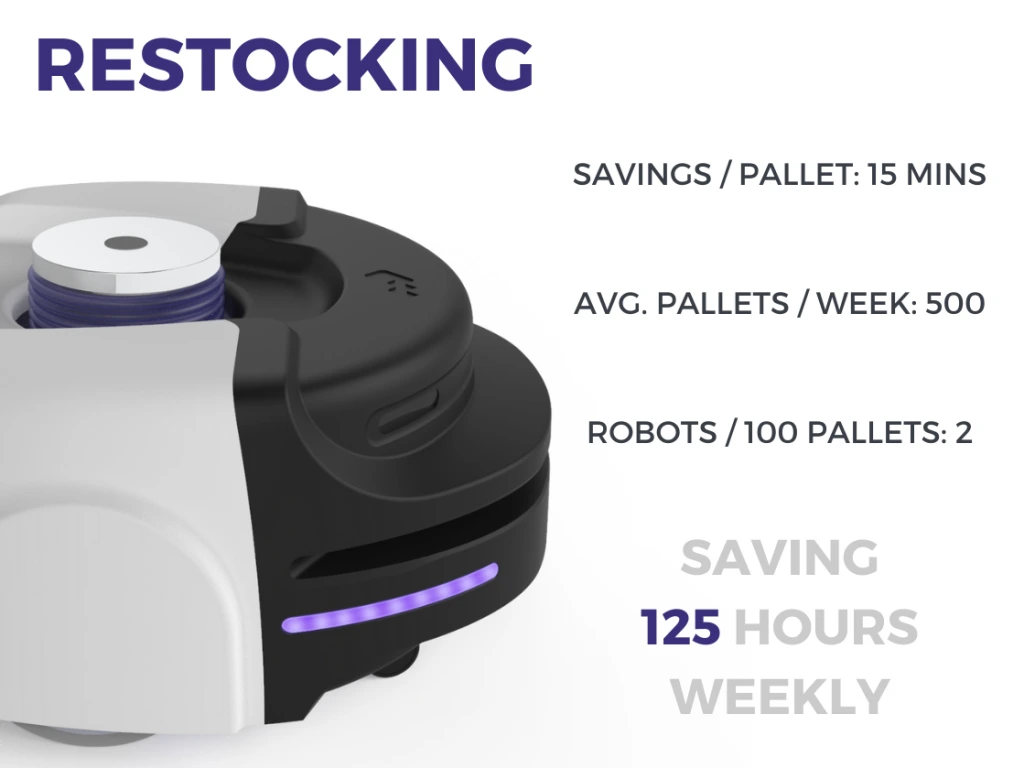

For retailers, inventory restocking is vital for a successful operation. It leads to optimization, brings about increased profits, reduction in costs, and allows them to gain trust from satisfied customers, consistently meeting customer demands.
When it comes to stock delivery, there are two main methods being used. One being that bulk stock is loaded onto roll cages from the manufacturing factories onto the vehicles and then dropped off at the storage warehouses with the roll cages. The other method is products being dropped off on pallets and kept in the storage area and when required, the products are distributed onto the trolleys. Then the trolleys are pushed to the aisles that need restocking. We will be focusing on the latter method.
Taking an average of 6 trolleys to empty one pallet load of products, about 15 minutes are spent in transit for each pallet load. Our research shows that a hypermarket can have around 500 pallets to restock per week.
Employees performing in this area tend to walk from the warehouse to the store multiple times a day. It being the case that they cannot know the exact number of products that requires restocking, they take an insufficient amount of products numerous times, which forces them to go back and forth to the warehouse with the trolleys until the shelves are completely restocked. This happens during after hours and with time being of the essence, employees do not have much time allocated for breaks, signifying that the work becomes physically and mentally exhausting.
Our robots will automate the transportation of these trolleys to assist the employees, which will result in a reduction of costs and time as much as 6,500 hours per year. Furthermore, by taking over the pushing and pulling of the heavy loads our robots will decrease risk of injuries and stress at work.
Our fleet of robots will optimize the maintenance of healthy inventory levels and working environment for the employees.
Read more about: How our robot bolsters the Click & Collect Process.